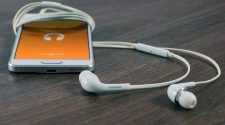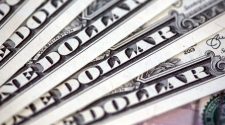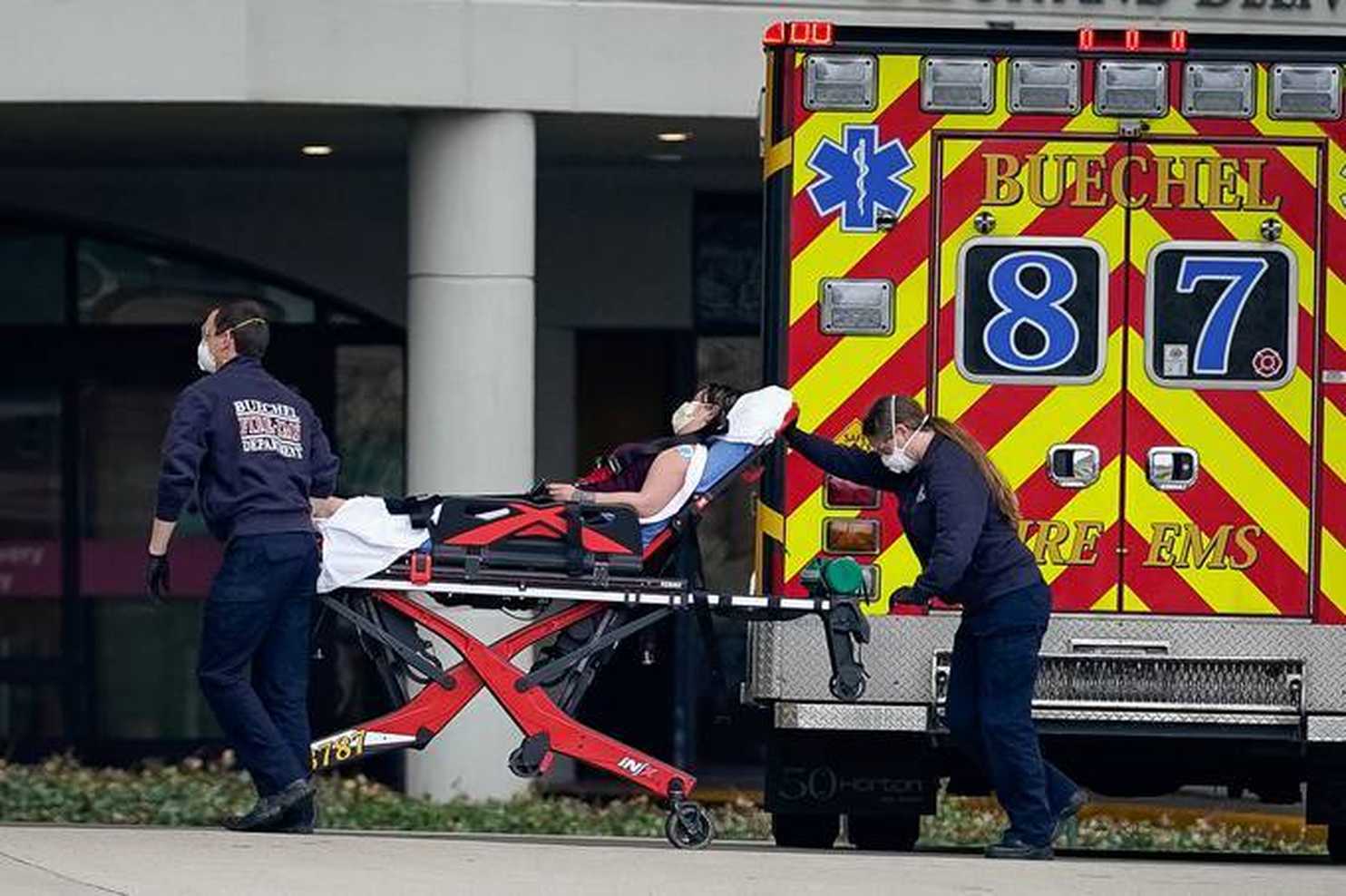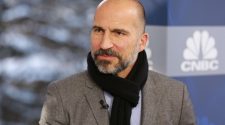THE PROGNOSIS
Emergency medical personnel transport a patient into the emergency department of Norton Women’s and Children’s Hospital, as all wear masks to avoid the spread of the novel coronavirus disease in Louisville, Kentucky (REUTERS/Bryan Woolston)
The emergency influx of $150 billion for hospitals and medical workers to help care for coronavirus patients is arguably the most critical part of the massive stimulus deal Senate leaders and the Trump administration announced around 1:30 a.m.
And the funding highlights a prime argument for maintaining widespread lockdowns in the United States, despite President Trump’s aim to open things up by Easter: If coronavirus infections continue growing at the same rate, the nation’s health-care system will quickly grow overwhelmed.
Hospitals already risk running out of beds and equipment to treat patients severely ill with covid-19, the disease caused by the virus. And the strain could hurt patients with other serious health conditions as resources are diverted away from them.
In the wee hours of the morning, after five politically fraught days of negotiations, Senate leaders agreed on a $2 trillion stimulus package that aims to flood the economy with capital by sending $1,200 checks to many Americans, creating a $367 billion loan program for small businesses and setting up a $500 billion fund for industries, cities and states, my colleagues report.
It includes extensive aid to medical centers, which Senate Minority Leader Chuck Schumer had described as a “Marshall Plan” for the U.S. health-care system. Hospitals and health systems will get $100 billion in emergency grants. Billions more will provide protective equipment for medical workers, ventilators for patients, testing supplies and new construction to house patients. The measure also boosts Medicare payments.
“Congress — both sides of the aisle — recognizes the need to help hospitals at the front lines of treating this pandemic, and we appreciate that,” Carlos Jackson, vice president of legislative affairs for America’s Essential Hospitals, an association of safety-net hospitals, told me. “Hospitals are scrambling.”
From Andy Slavitt, director of the Centers for Medicare and Medicaid Services under President Barack Obama:
As we know Trump has said they are taking steps to “open up” the country.
If people did, the reason will be because of the number one risk factor: age? No. Pre-existing illness? No.
Number one risk factor right now is no access to an ICU bed or ventilator. /17
— Andy Slavitt @ 🏡 (@ASlavitt) March 25, 2020
For several weeks, public health officials have been warning of an impending wave of coronavirus cases — and now their predictions are starting to play out. New York Gov. Andrew Cuomo (D) gave a somber update yesterday on the exploding number of cases in his state, where nearly 26,000 people are known to be infected and more than 200 have died.
We had projected a need for 110K hospital beds at the apex of this virus.
The rate of infection is INCREASING and the curve has increased.
New projections show we may need 140K beds.
NYS is doing everything we can on every level to slow the spread.
We need your cooperation.
— Andrew Cuomo (@NYGovCuomo) March 24, 2020
The apex of this pandemic is higher & sooner than we thought.
We believe we are 14-21 days away from this apex.
We are scaling hospital capacity as fast as humanly possible.
I will turn this state upside down to get the hospital beds we need.
— Andrew Cuomo (@NYGovCuomo) March 24, 2020
Jeff Rhode, staff photographer for Holy Name Medical Center, located just outside New York City in Teaneck, N.J., told MedPage Today it’s “just staggering to see how fast” the center’s coronavirus cases are growing.
“I’ll go and see three rooms for isolation, with plastic and negative air flow,” Rhode said. “The next morning, I’ll see three-quarters of the floor the same way. Two hours later, the whole floor is that way, all rooms in isolation with negative air flow.”
It’s unclear the influx of funds is enough – or will come soon enough – to prevent the strain on hospitals.
The impact depends in part on how many intensive-care beds they maintain. The country’s ICU capacity varies as much as 10 times from region to region, my Washington Post colleague Christopher Ingraham explains.
For example, Fort Collins, Colo., has just over one ICU bed for every 10,000 people, while Slidell, La., has nearly 11 beds per 10,000 people, according to Medicare hospital data analyzed by Columbia University’s Adam Sacarny.

Hospitals in the United States report about 93,000 ICU beds. That equates to about 3.6 ICU beds per 10,000 people ages 16 and older — a number quite a bit higher than in most other countries, University of Pittsburgh professor Jeremy Kahn told Christopher.
“We are actually quite well-bedded,” Kahn said.
Yet that capacity doesn’t look as spacious when one considers how many patients are expected to require hospitalization from the coronavirus. As I wrote yesterday, actuaries for California’s individual marketplace have estimated 400,000 people will be hospitalized in a best-case scenario. A worst-case scenario could be closer to 3 million.
Kahn told Christopher he is “extremely” worried that the virus will still overrun ICU capacity in some areas of the country.
“In a 2010 paper he co-wrote, he estimated that if 0.02 percent of the country were to suddenly require ICU care as a result of a pandemic, ICUs would be overrun in roughly 17 percent of the nation,” Chris writes. “If the share of critically ill rose to 0.05 percent, capacity would be exceeded in 90 percent of the United States.”
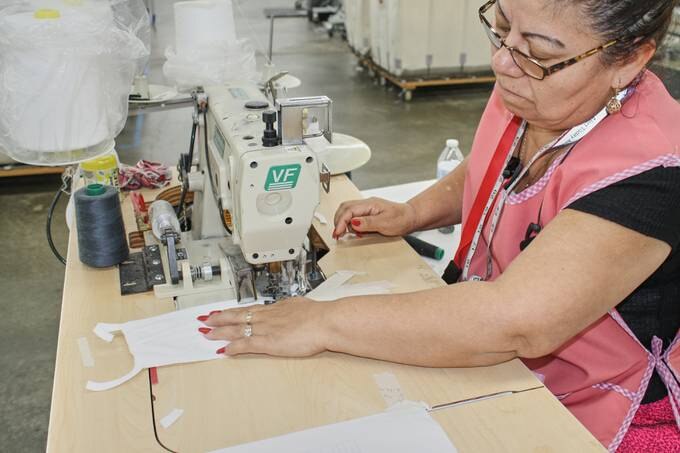
Medical masks are produced at American Giant’s Eagle Sportswear facility in Middlesex, N.C. (American Giant)
— It’s not just about ICU beds. Medical facilities are also issuing urgent warnings about running low on ventilators for the most severely ill patients and protective equipment for their workers — something Congress tried to address in the stimulus bill.
Three major companies — Ford, General Electric and 3M — announced yesterday they will work together to mass-produce respirators, ventilators and 3-D-printed face shields.
“This is like bringing in the cavalry to say, ‘Okay, where can we double down to make things go faster and bigger?’ ” Mike Kesti, global technical director of 3M’s personal safety division, told my Post colleague Jacob Bogage.
Ford sent teams of engineers this week to consult with counterparts at 3M and General Electric to ramp up production of 3M respirators, GE ventilators and new 3-D-printed face shields, the companies announced Tuesday. The products are needed desperately by health-care workers and covid-19 patients as cases multiply across the country.
Equipment shortages are even being experienced by dialysis centers, which are giving patients masks because they’re forced to sit alongside dozens of other people to receive lifesaving treatment several times a week.
“Patients with severe kidney disease, already vulnerable because of their life-threatening illness, are worried that receiving dialysis in large facilities with dozens of other people could expose them to infection,” my Post colleagues Lenny Bernstein, Christopher Rowland and Tom Hamburger report.
“Doctors fear that if the covid-19 disease spreads in treatment centers, patients seeking dialysis will flood overburdened and under-equipped hospital emergency departments,” they write. “Some of the nation’s more than 5,000 private dialysis centers have begun handing out masks to stem the spread of the virus, but others are running short and rationing them.”
— And then there are patients like Bryce Olson in rural Oregon, who is considering whether to drop out of a clinical trial for aggressive prostate cancer, as it requires regular travel to San Diego. He is caught between worries about contracting the virus with a weakened immune system and skipping cancer treatments that might be keeping him alive, The Post’s Laurie McGinley writes.
“Olson’s dilemma is one of many challenges confronting cancer patients and their doctors as they grapple with the twin foes of cancer and covid-19,” Laurie writes.
“Cancer will be diagnosed in estimated 1.8 million people in the United States this year, according to the American Cancer Society, and more than 600,000 will die of the disease. Now, with the virus racing through the country, cancer doctors and patients are taking sometimes drastic steps to try to deal with the crisis.”
Politico’s Dan Diamond:
This is remarkable: NYU’s medical school is allowing students to graduate *now*, three months early, to become interns and join the fight against coronavirus. (Email via a tipster.) pic.twitter.com/gHa3fshnwe
— Dan Diamond (@ddiamond) March 25, 2020
AHH, OOF and OUCH
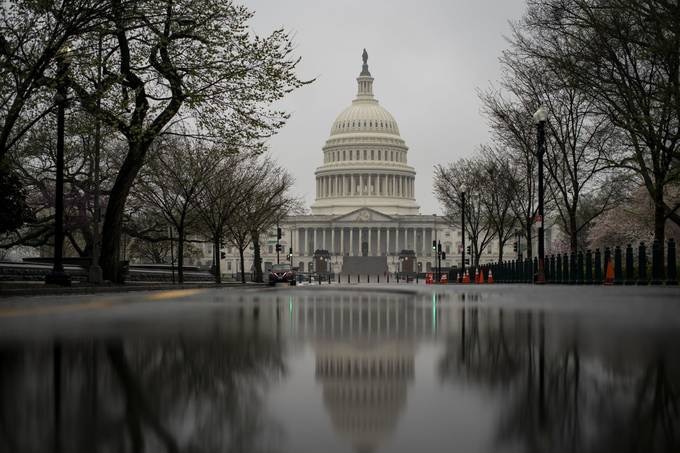
The U.S. Capitol reflected in a pool of rain water on Capitol Hill in Washington, D.C. (Al Drago/Bloomberg)
AHH: Senate Majority Leader Mitch McConnell said the Senate will pass the massive stimulus package – its third measure aimed at coronavirus relief – later today. And Trump will “absolutely, absolutely, absolutely” sign it, according to Treasury Secretary Steve Mnuchin.
“You know, I wouldn’t say there were any thorny, any particular thorny issues. This is a very complicated piece of legislation. It’s a very large investment in the U.S. economy,” Mnuchin told reporters after the deal was struck. “And people worked tirelessly around the clock going through the documents. So, again, couldn’t be more pleased.”
“The package would extend extraordinary taxpayer assistance to potentially millions of American and companies that have been hammered by the fast-moving economic crisis,” our colleagues Erica Werner, Mike DeBonis, Paul Kane and Jeff Stein report. “The bill is being rushed through Congress without public hearings or formal review, and it’s unclear how effective the measures would be in arresting the economy’s sudden fall.”
The bill does this: It directs payments of $1,200 to most American adults and $500 to most children, creates a $500 billion lending program for companies, states, and cities, and extends an additional $367 billion to help small companies deal with payroll problems. It significantly boosts unemployment insurance, expanding eligibility and offering workers an additional $600 a week for four months, on top of what state unemployment programs pay.
It also features a massive $500 billion loan and loan guarantee program that’s meant to dole out $425 billion to businesses, cities and states; an additional $50 billion to passenger airlines; $8 billion for cargo airlines; and $17 billion for firms deemed important to national security.
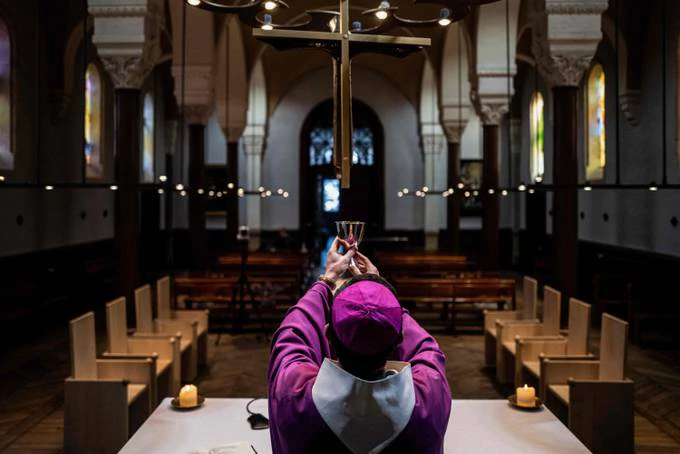
Auxiliary Bishop Emmanuel Gobilliard rehearses before celebrating a live-streamed Mass in the empty Saint-Irenee church in Lyon, France. (Jeff Pachoud/AFP/Getty Images)
OOF: Trump declared yesterday he wants the nation “opened up” by Easter. That’s two weeks and four days away.
“You’re going to lose more people by putting a country into a massive recession or depression,” Trump said at a town hall broadcast. “You’re going to have all sorts of things happen; you’re going to have instability. You can’t just come in and say let’s close up the United States of America, the biggest, the most successful country in the world by far.”
But many experts say easing restrictions on Trump’s timeline would be disastrous. Health experts are pointing to school and business closures worldwide that have curbed exponentially growing infections. In the United States, however, officials haven’t allowed enough time for such restrictions to have an impact, our Post colleagues William Wan, Reed Albergotti and Joel Achenbach report.
“To be a week into these restrictions and already be talking about abandoning them is irresponsible and dangerous,” Tom Inglesby, director of the Johns Hopkins Center for Health Security, told our colleagues. He said loosening restrictions would allow the coronavirus to “spread widely, rapidly, terribly, and could kill potentially millions in the year ahead with huge social and economic impact.”
The Post’s Matt Viser:
Joe Biden on the idea that President Trump is going to be able to get things back open by Easter: “That would be a real resurrection if that could happen.”
— Matt Viser (@mviser) March 24, 2020
Post religion reporter Sarah Pulliam Bailey:
As Trump was making his announcement today that he wants to open things by Easter, the Southern Baptist Convention announced that it would cancel its annual meeting in June, the first time it has canceled since World War II.
— Sarah Pulliam Bailey (@spulliam) March 25, 2020
Trump’s Easter time frame set off a furious discussion over whether it’s more important to save people from dying of the virus or save the economy. But policymakers, ethicists and religious leaders say people have set up a false dichotomy, with the economy on one hand and public health on the other, Sarah writes.
Arthur Brooks, formerly president of the conservative think tank American Enterprise Institute, said policymakers will need to find a balance between economic and health concerns, just as they did between national security and the economy after the Sept. 11, 2001, attacks.
“The big question is: Who’s going to win? The economists? Public health people? And the answer is both and neither,” he told Sarah. “The ethical thing to do is how to think about the balance between these policy poles.”
— It’s clear some state and local leaders are not on board with a time frame as speedy as the one suggested by the president.
D.C. Mayor Muriel E. Bowser (D) will order nonessential businesses — such as salons, barbershops, tattoo parlors and tanning salons — to shutter, an effort already underway in Maryland and Virginia, our Post colleagues Fenit Nirappil, Gregory S. Schneider, Ovetta Wiggins and Rachel Chason report.
She condemned the president’s call for easing restrictions. “Clearly it is alarming to hear the president say that — without medical and health guidance — that he would put the economy and starting the economy ahead of saving lives,” said Bowser.
— New York Gov. Andrew Cuomo (D) cited the dramatic surge of cases in New York as one reason the country should not yet be reopening businesses, our colleagues Ben Guarino, Shayna Jacobs and Tim Craig report.
“I understand restarting the economy . . . but focus on the crisis at hand,” Cuomo said. “Focus on the looming wave of cases about to break in 14 days. . . . And to communities all across the country, [New York] is just the test case. Where we are today, you will be in three weeks, four weeks or six weeks. We are your future.”

The walkways are deserted at the Martin Luther King Jr. Memorial in Washington. (Katherine Frey/The Washington Post)
— As Trump suggested coronavirus restrictions could soon ease up, the American Medical Association, American Hospital Association and American Nurses Association released an open letter pleading with the American public to stay home.
“Physical distancing and staying at home are the key to slowing the spread of 2019 novel coronavirus (COVID-19) to give physicians, nurses and everyone on the front lines a fighting chance,” they wrote. “…That’s why we’re urging the public to #StayHome as we reach the critical stages of our national response to COVID-19. Of course, those with urgent medical needs, including pregnant women, should seek care as needed. Everyone else should #StayHome.”
— Amid Trump’s tug-of-war with experts over the coronavirus response, he still affirms he’s on the same page as Anthony Fauci, the infectious disease official widely trusted to be straight with the public.
“On Tuesday morning, Trump seemed eager to reaffirm Fauci’s standing within the administration amid the latest bout of palace intrigue, thanking him for recent complimentary remarks and making light of a perceived slight by the NIAID chief,” Politico’s Quint Forgey writes.
But the New York Times’s Maggie Haberman reported last night that Trump’s patience with Fauci is wearing thin as Fauci has grown bolder in correcting the president’s “rosy statements about the spread of the coronavirus in the past two weeks.”
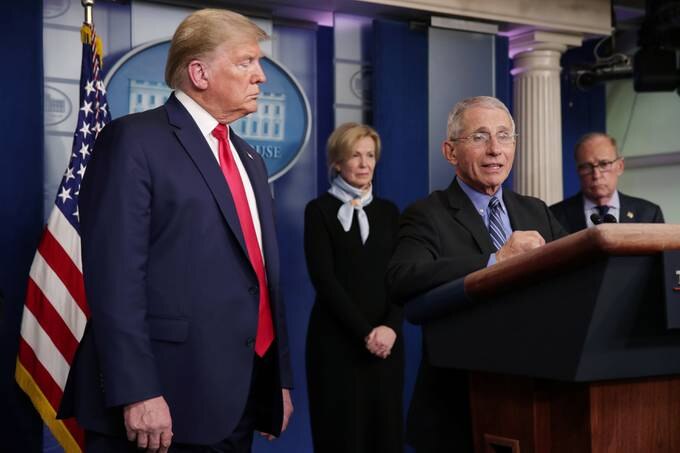
Anthony Fauci, director of the National Institute of Allergy and Infectious Diseases, speaks as President Trump, Ambassador Debbie Birx and White House National Economic Council Director Larry Kudlow listen. (Jonathan Ernst/Reuters)
OUCH: An uncomfortable reality: The pathogen has proved more deadly and debilitating for older Americans. And the U.S. policymakers leading the response are all in their 60s, 70s and 80s.
Trump is 73. Fauci is 79. Deborah Birx, the White House coronavirus response coordinator, is 63.
House Speaker Nancy Pelosi (D-Calif.) turns 80 on Thursday. Senate Majority Leader Mitch McConnell (R-Ky.) is 78, Minority Leader Charles E. Schumer (D-N.Y.), 69.
And Democratic presidential candidates Joe Biden, 77, and Sen. Bernie Sanders (I-Vt.), 78, are also among the most influential leaders who “could be especially vulnerable to the worst of a viral infection that has ravaged elderly communities in China, Italy, New York and Washington state,” our Post colleague David Nakamura writes.
“As these leaders debate the course of action for an anxious nation, their own heightened risks of exposure have raised questions about the readiness of the nation’s political and governing infrastructure to withstand a destabilizing and unpredictable pandemic,” he adds.

Texas Gov. Greg Abbott (R) gestures to boxes of personal protective equipment during a news conference. (Nick Wagner/Austin American-Statesman/AP)
— Texas and Ohio officials have said abortions are among the nonessential procedures that should be delayed to preserve resources for health-care workers responding to the pandemic.
But the move has reignited the debate over abortion rights in the middle of a health crisis, the New York Times’s Sabrina Tavernise reports.
The states say they want to preserve medical equipment. But advocates “accused state leaders of using the coronavirus crisis to advance a political agenda to restrict abortions. They pointed out that the American College of Obstetricians and Gynecologists, a respected society of medical professionals, recommended last week that abortion not be included in the list of medical procedures that could potentially be postponed.”
— Abortion providers across Texas scrambled to respond to the order to halt abortion procedures and to understand what they could do legally, our colleague Arelis R. Hernandez reports.
— In a letter to Health and Human Services Secretary Alex Azar, dozens of antiabortion leaders called on the administration to ensure “emergency response funds are not diverted to the abortion industry.”
Marjorie Dannenfelser, president of the antiabortion group Susan B. Anthony List:
Abortion industry feeding off misery of others while posing as Florence Nightingale. https://t.co/NOa9KxiUwe
— MarjorieDannenfelser (@marjoriesba) March 24, 2020
— In other coronavirus news (is there really any other news these days?):
The administration’s efforts:
- The president downplayed the risk of the novel coronavirus and has repeatedly compared the pandemic to the seasonal flu. The comparisons are unfair because “the threats posed by the coronavirus are that it’s deadlier than the seasonal flu and there are no firewalls in place to stop its spread,” our Post colleague Philip Bump writes.
- Software company Oracle will work with the Trump administration to collect data on unproven drugs to treat the coronavirus, our colleagues Yasmeen Abutaleb, Laurie McGinley and Josh Dawsey report.
A bit of good news:
- The coronavirus is not mutating quickly as it circulates through the human population, which suggests the virus is less likely to become more or less dangerous as it spreads, The Post’s Joel Achenbach reports. That’s also good news for researchers looking into long-lasting vaccines.
Workers on the front line:
- Grocery store clerks, delivery drivers, utility workers — these are workers still on the job, ensuring Americans can still get their daily needs as most of daily life is at a standstill, the Wall Street Journal’s Valerie Bauerlein, Jennifer Levitz and Alejandro Lazo write.
- States are competing against each other and driving up prices for critical medical supplies. Hospitals are calling for donations and are “considering using ventilators designed for large animals because they cannot find the kind made for people,” our colleagues Jeanne Whalen, Tony Romm, Aaron Gregg and Tom Hamburger report.
- Coal miners have been ordered to continue work, despite work that often involves crowding, coughing and workers who have lung damage, our colleague Will Englund reports.
And if you have lots of money to blow:
- The hospitality industry has all but shut down, but this high-end Swiss hotel is offering a luxury quarantine package, which even includes a $500 coronavirus test, The Post’s Natalie B. Compton reports.





